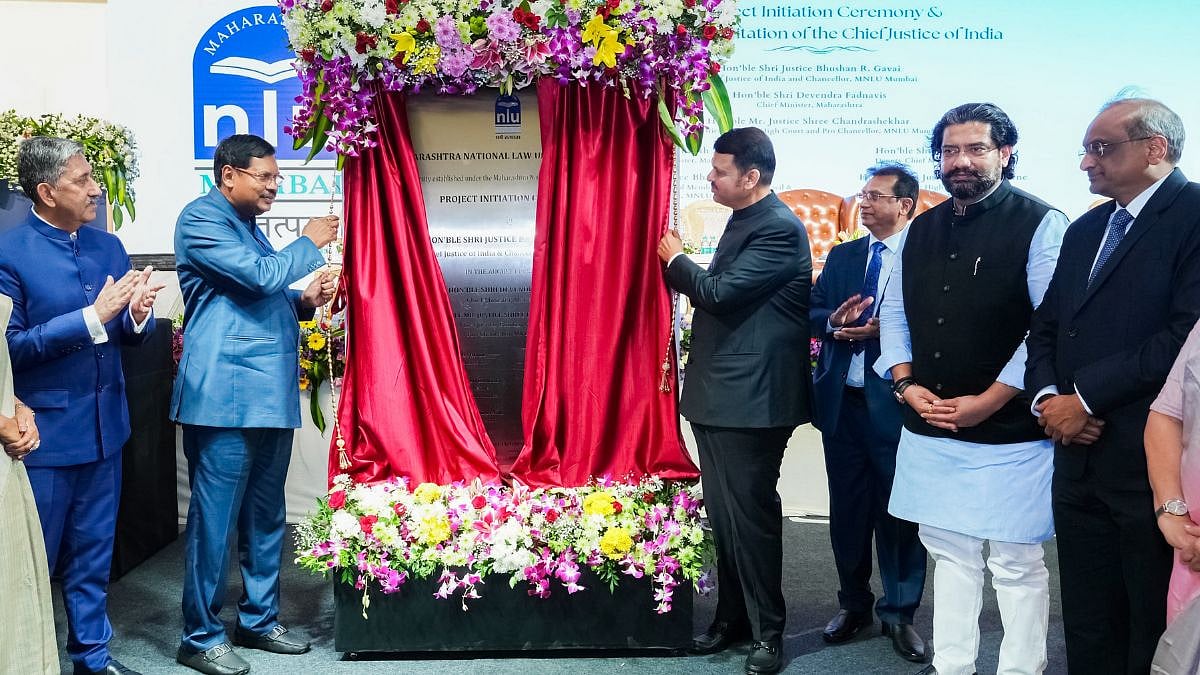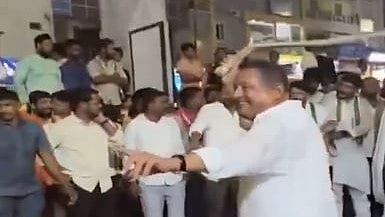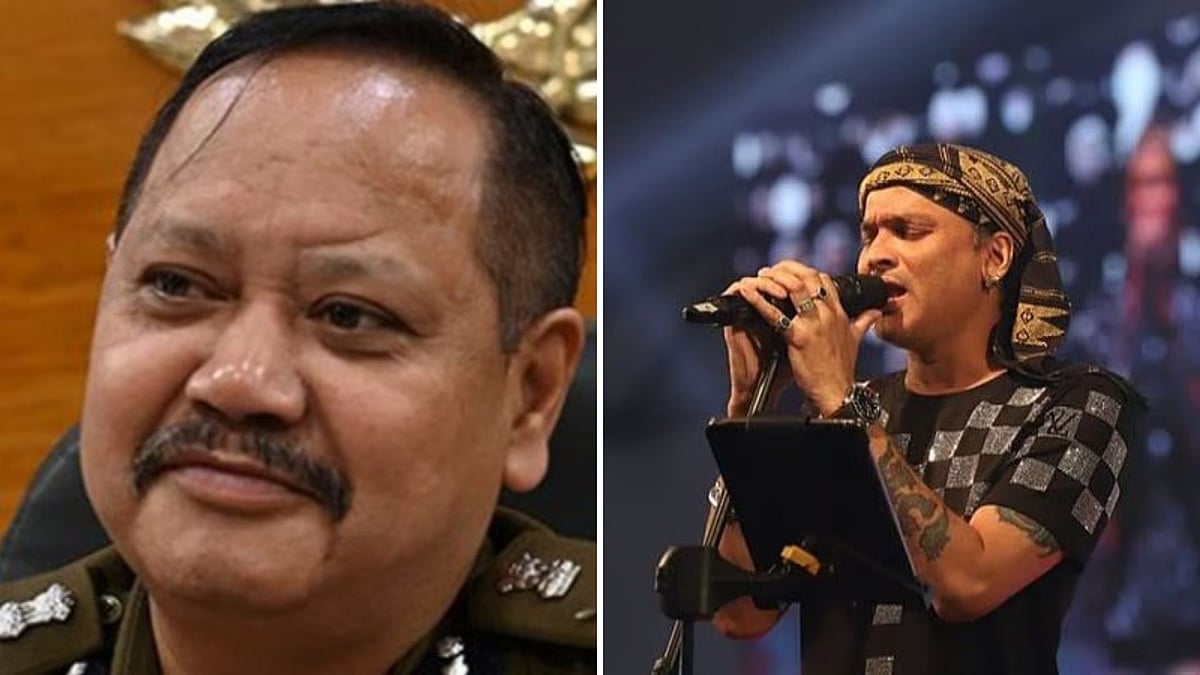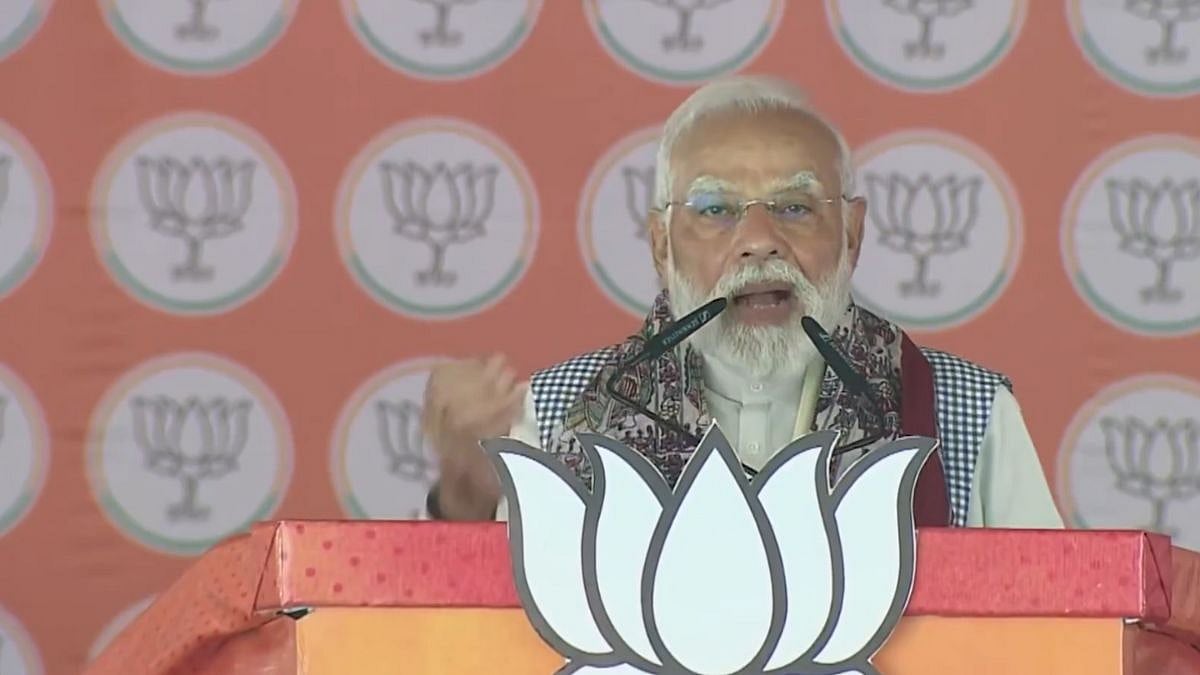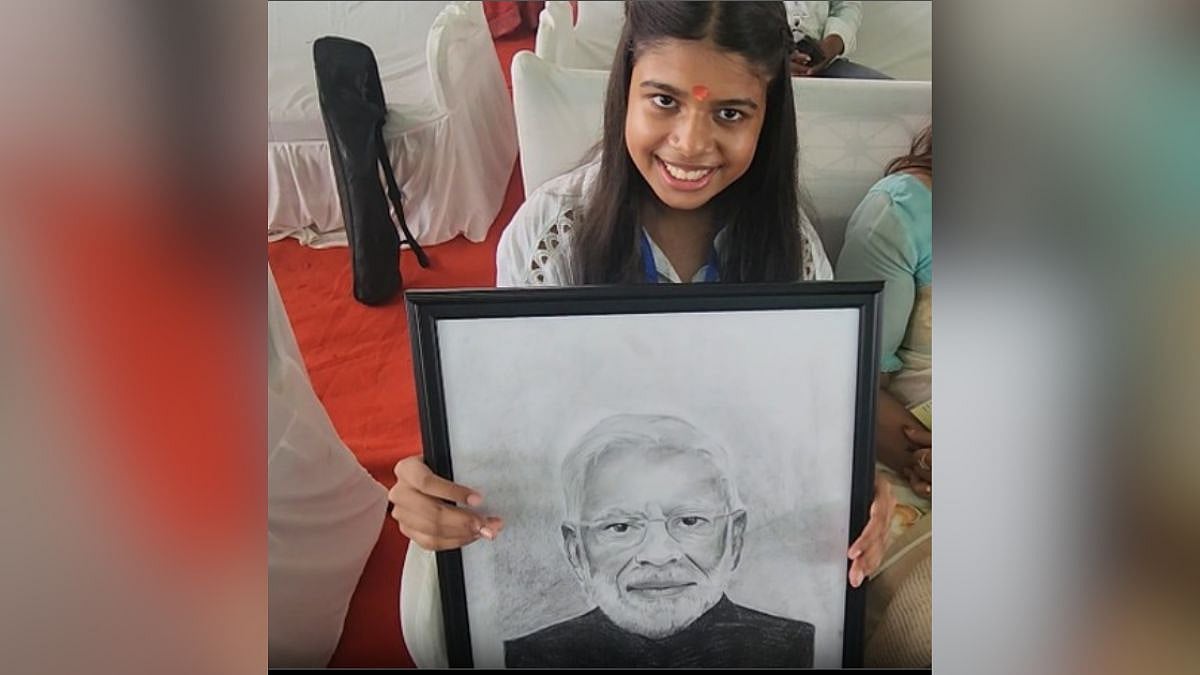Lucknow: India, a nation teeming with vitality and promise, also harbors a heartbreaking reality that lurks in the shadows of its bustling streets and tranquil neighborhoods. It's a reality where the laughter of children is silenced, where dreams are shattered, and where families are torn apart by the inexplicable disappearance of their loved ones. In the heart of this crisis lie the stories of Mohini Singh and Kajal, two mothers whose lives were forever altered by the vanishing futures of their children.
The Stories Unfold:
Mohini Singh's recollection of August 15, 2022, carries a weight of sorrow that no parent should ever have to bear. On that overcast day in Varanasi, her daughter, Manisha, left for school, never to return. "I asked her not to go as the weather was bad. She insisted. That was the last time I saw her," Mohini recounts, her voice quivering with emotion. Little did she know that Manisha's departure that day would mark the beginning of an agonizing journey into the abyss of uncertainty.
For Kajal, the nightmare began on December 24, 2022, a day that was supposed to be filled with the joy of the holiday season. "My six-year-old son, Sidhartha, wanted to play a game on my mobile. As I did not have a balance, he went to a nearby shop to get it recharged. He never returned," Kajal recounts, her eyes welling up with tears. Despite frantic searches and police involvement, Siddhartha remained elusive, leaving Kajal and her family grappling with the haunting silence of his absence.

The anguish of Mohini and Kajal is just the tip of the iceberg in a sea of countless families grappling with the trauma of missing children across India.
The Scale of the Crisis:
Mohini and Kajal's stories are not isolated incidents but symptomatic of a pervasive crisis gripping India: the alarming rate at which girls go missing and children are abducted across the nation. According to data from the National Crime Records Bureau (NCRB), an average of 2,190 girls go missing every day in India. This startling revelation exposes a heartbreaking reality that demands urgent attention from authorities and society at large.
"The actual figure of missing girls is much more than what is reported by NCRB," emphasizes Lenin Raghuvanshi of the People’s Vigilance Committee on Human Rights (PVCHR). "Police rarely lodge missing complaints. They ask the family to look out for the missing girl themselves."
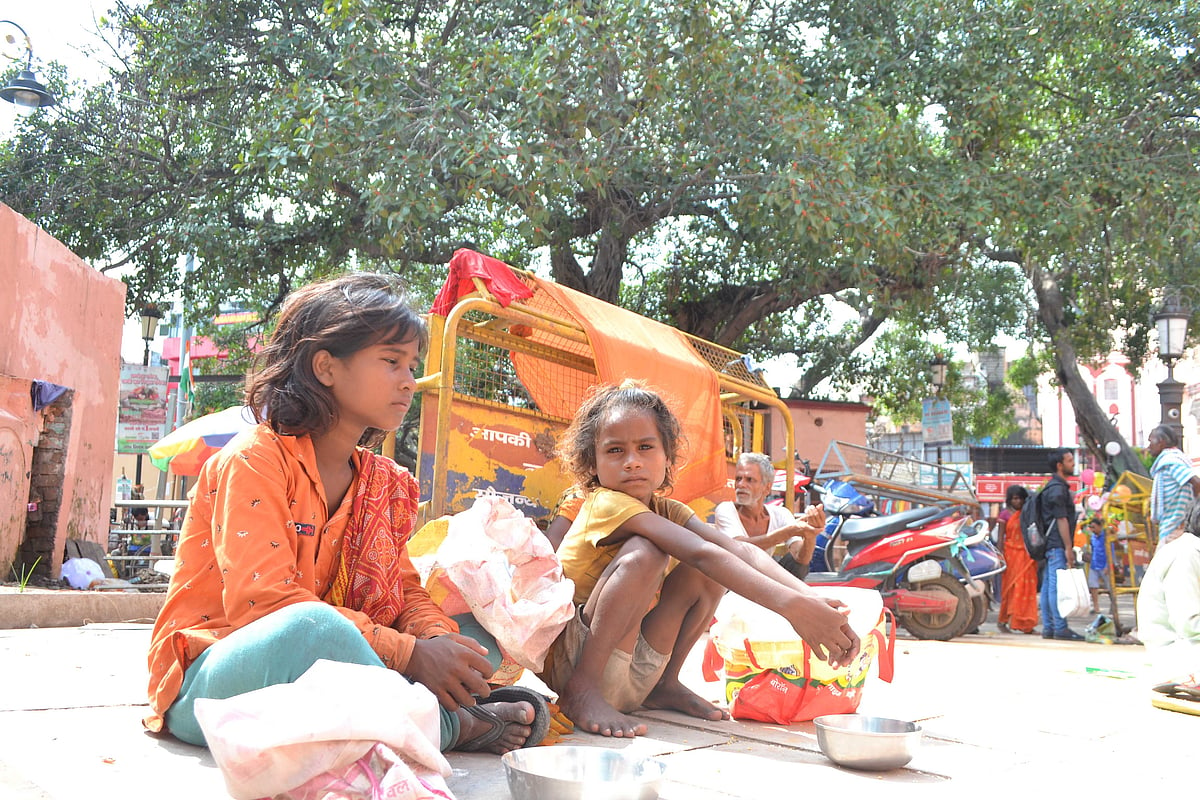
The NCRB's latest report paints a grim picture of the pervasive issue of missing girls in the country. Over the last five years, there has been a gradual increase in the number of missing girls, reaching an alarming 28 percent surge from 66,333 in 2017 to 85,130 in 2022.
According to data provided by the Ministry of Women and Child Development in the Monsoon session of the Lok Sabha this year, 2,75,125 children went missing between January 1, 2018, and June 30, 2023. It means every hour six children go missing in India. The astounding figure suggests that among these missing numbers, 62,237 were boys, and the rest a whopping 2,12,825 were girls.
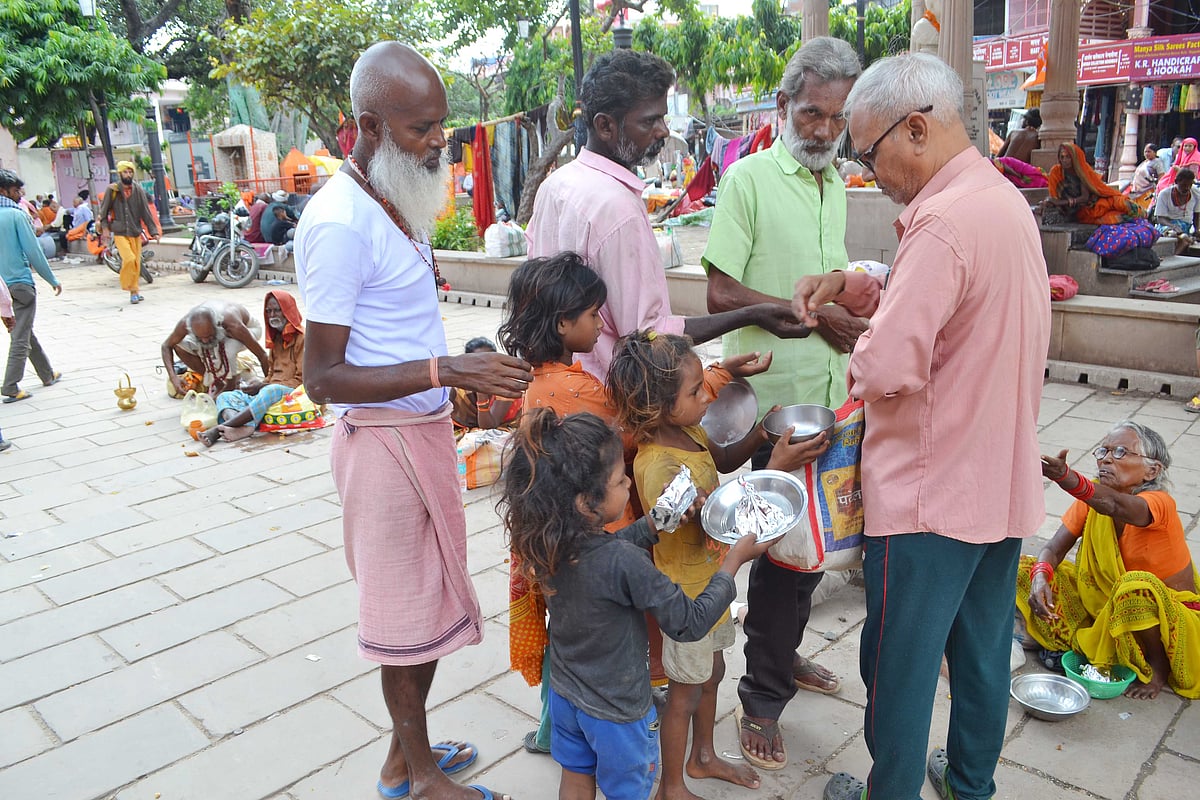
Madhya Pradesh reports the highest number of girls going missing, but the number of missing children is high across the nation. Of the 61,102 missing children, 49,024 were girls. The data also showed that of the 2,75,125 children that went missing in the country, 240,502 were found, thus 34623 children are still untraceable.
“Many of these children are abducted for ransom or sold into slavery or prostitution. Human trafficking has become a major issue in the state, and children are particularly vulnerable to this heinous crime,” Dr. Sangeeta Sharam, a Child Rights activist, and former member of the Child Welfare Committee said.
Neil Giles, Director of Intelligence at Stop the Traffik, based in the UK, addressing a workshop of the Journalism Centre of Global Trafficking, stated that trafficking is a $150 billion business, where a child can be sold for adoption between $20,000 and $25,000.
In India, Moradabad and Varanasi police busted a child trafficking racket, where kidnapped children of a few months were being sold for Rs 2 lakh to Rs 5 lakh, depending upon the appearance and sex of the child. In September, Varanasi police arrested 10 people, including two women, who had carried out over 50 kidnappings in the last six months and sold the children to childless couples or mafia involved in begging.
Additional Commissioner of Police Santosh Singh said that the gang members confessed that their network extended into Bihar, Jharkhand, and Rajasthan. “They targeted children from families of laborers sleeping on the roadside, slums, and impoverished areas, ensuring that the crimes remained under the radar. The value of the child was determined by their perceived attractiveness, and the traffickers often sold the children to hospitals and childless couples,” he said.
In Moradabad, Uttar Pradesh the police busted the gang after a child went missing from a hospital on September 2. The gang was operated by a lady from Mumbai who had four persons – all nurses in hospitals – on her rolls. They used to steal the child immediately after birth and sell it to affluent childless couples in Delhi, Kolkata, and Mumbai.
"Children are vulnerable to kidnapping and trafficking. We need to take immediate action to prevent this trend. It is a grave violation of their rights, and we need to take immediate action to prevent it," says Sunitha Krishnan of Prajwala, the organization that helps rescue trafficked children.
The problem with the trafficking of toddlers is that if the police fail to recover the child within 24-48 hours of being trafficked, you will not be able to track him. “A quick police action is required to track the trafficking toddler, and this unfortunately is missing,” she said.
Dr Sangeeta Sharma recounts that when they went to raid a temple area where a woman beggar was seeking alms with five children, suspicion was raised as visibly some of the children did not seem to be of her. “But, she said they are her children and even children were calling her amma (mother),” Sharma said adding. “Children have an impressionable mind and when they hear someone calling a lady as Mother and a male as father they start calling them by the same name.”
Dharmendra Yadav, a police officer who had launched Operation Muskan – a campaign to trace missing children says, "We cannot allow our children to be abducted, trafficked, and exploited. We need to take strong action to prevent this heinous crime and protect the rights of our children." Yadav, when he was SSP, Ghaziabad, Uttar Pradesh, is claimed to have rescued over 200 children in one month.
He said rescuing children is a tedious job as you need a team of dedicated officials with a strong database that includes pictures of the abducted child. “Earlier, such kidnappings were urban phenomenon but now children are being stolen from villages. This is done to escape police scrutiny and as villagers are poor, kidnappings do not make such an issue,” he said.
Yadav said that these kidnapped children prove to be a “fuel ” for the begging industry. He recounts a girl from Mograhat in Ghaziabad who was reported missing and was rescued in Diamond Harbour in Bengal. In that raid, 14 children who were reported missing from Katihar in Bihar were also rescued.
Beggars could be seen anywhere at traffic crossings, outside temples, Mosques, and even at Bhandaras. In Lucknow, Uttar Pradesh, beggars are ferried in a truck to the marketplaces or outside temples in the morning, and by evening they are taken back to the slums on the outskirts of Lucknow.
There are syndicates in Bengal that deploy children as young as one as beggars, and there are agencies that network between impoverished parents from West Bengal's rural areas and beggars in the city to supply children for collecting alms.
Police say these beggars are trafficked children, but Bablu Pal, a part of the begging syndicate said that these children come from villages around Kolkata. “There are so many poor families in West Bengal's villages who have as many as six children. As they cannot feed these children they send them to us,” he said.
Pal claims that every dawn parents bring their kids to him, and he distributes them among the city beggars. “There is a great demand for "helpless-looking" children, and the demand is highest for babies.
Explaining the detailed procedure, Pal said: "Every morning at 4 am, parents bring their children to city-based railway platforms at Sealdah, Garia, and Sonarpur Stations. Beggars crowd around these places.
"We are not bothered about police interference. A Rs 100 or Rs 500 note is enough to get rid of them. Besides, we are very careful," he said.
Begging Industry
Manoranjan Sinha, who is working with an NGO that is looking for options to rehabilitate beggars said that begging is such a lucrative business that many times parents force their kids to go begging in a group comprising around 150 persons.
A 40-year-old woman has managed to earn ₹ 2.5 lakh in just 45 days by forcing her eight-year-old daughter and two sons to beg on the streets of Indore. The woman's family, who are part of a group of around 150 people involved in begging in the city, owned land and a two-story house in Rajasthan, Sinha said.
The report said that the woman, named Indra had earned Rs 2.5 lakh in alms in the last 45 days, of which she had sent Rs 1 lakh to her in-laws, deposited Rs 50,000 in a bank account, and invested Rs 50,000 in fixed deposit schemes (FDs).
“The woman's family also owned land and a two-story house in Rajasthan. Besides, Indra's husband had purchased a motorcycle in her name, and the couple would roam around the city on the two-wheeler," he said.
Varying estimates put their numbers as 5 lakh to 15 lakh across the country. According to government census results (2011), West Bengal and Uttar Pradesh have the most beggars. Child begging is particularly prevalent in UP, while there are more beggars with disabilities in West Bengal.
These statistics are not mere numbers; they represent the untold stories of countless families torn apart, dreams shattered and lives forever altered. The crisis extends beyond statistics, and the magnitude of the problem necessitates a comprehensive and empathetic exploration to bring attention to the gravity of the situation.
Child Trafficking: A Global Phenomenon
Child trafficking is not just a problem confined to India but a global phenomenon that transcends borders and affects millions of children worldwide. According to a report by UNICEF, an estimated 1.2 million children are trafficked each year for various exploitative purposes, including forced labor, sexual exploitation, and child soldiering.
In recent years, there has been growing international concern over the proliferation of child trafficking networks and the exploitation of vulnerable children for profit. Organizations like the International Labour Organization (ILO) and the United Nations Office on Drugs and Crime (UNODC) are working tirelessly to combat child trafficking and strengthen international cooperation to protect children's rights.
The rise of the internet and social media has also facilitated the spread of child trafficking networks, enabling traffickers to target vulnerable children online and exploit them for profit. In response, governments and law enforcement agencies around the world are implementing stricter laws and regulations to crack down on online child exploitation and protect children from harm.
The Human Toll:
Behind the statistics lie the human toll of this crisis, a toll borne by families like Seema Sharma's from a small village in Bahraich, Uttar Pradesh. Seema's daughter, Anjali, went missing on her way home from school, leaving Seema pleading for answers. "Every day without her feels like an eternity. I just want to know if she's safe and alive. The uncertainty is tearing us apart," Seema confides, her voice trembling with despair.
Aliya and Zeeshan's story from Ghaziabad echoes Seema's anguish. Their son, Rehan, disappeared from their home, leaving them devastated. "We are devastated by the loss of our son. We don't know who took him or why. We just want our son back," Aliya says, her voice choked with emotion.
The Invisible Victims:
The stories of missing girls and abducted children are often stories of vulnerability exploited, innocence robbed, and futures stolen. Meera, a survivor of human trafficking, shares her haunting experience of being trafficked at a young age. "I was just a girl when they took me. Sold like a commodity, I lost everything. But not everyone is as fortunate to break free," Meera recounts, her eyes reflecting the pain of her past.
“I was lucky that I was able to come back to society. Millions like me yearn to go back to their village and meet their parents, but there is no avenue. Many of them do not remember the names of their village or the names of their parents,” she said
Despite the scale of this crisis, law enforcement often struggles to bring these missing girls and abducted children back home. Investigating such cases requires dedicated resources, coordination, and a heightened sensitivity to the victims' vulnerability.
The Call to Action:
As India confronts the dual crises of missing girls and abducted children, it stands at a crossroads. The stories of Manisha, Sidhartha, Anjali, and Rehan serve as a clarion call for action, compelling us to confront this humanitarian crisis with compassion, urgency, and unwavering determination.
"We need a comprehensive strategy to tackle this issue," emphasizes Nandini Thakkar, an advocate for child rights. "The safety and well-being of our children must be our top priority."
The Indian government has taken several steps to address the issue of missing children, including the implementation of the Juvenile Justice (Care and Protection of Children) Act, which provides for the protection of children from abuse and exploitation.
"The issue of missing children is a grave concern for our country. Children are the future of our nation, and their safety and well-being must be a top priority. This is the time we should act, and act decisively," says Shishir Singh, a spokesperson of the UP Government.
NGOs and civil society groups are also working tirelessly to prevent child trafficking and provide support to families of missing children.
"We are working with families of missing children to provide counseling and legal aid. We are also raising awareness about the issue of child trafficking and collaborating with law enforcement agencies to track down missing children," says Shalini Singh, a member of an NGO working on child rights.
Awareness about child crime:
Renowned child rights activist and Nobel Peace Prize laureate Kailash Satyarthi has embarked on a new initiative to eradicate child crime at the village level, in collaboration with multiple non-governmental organizations (NGOs). The campaign aims to raise awareness about child crimes and ensure strict actions against those involved.
In the initial phase, 300 villages in Meerut and Baghpat in Uttar Pradesh have been selected in association with the Janhit Foundation to participate in this noble endeavor.
Under the campaign, each village will establish a committee named Bal Mitra (Child’s Friend), comprising 15 individuals, including the village head, Anganwadi workers, and ASHAs (Accredited Social Health Activists). “This committee will have several crucial responsibilities, including preventing child marriages, curbing child labor, and combating child trafficking. The committee will closely monitor any crimes committed against children and educate them about toll-free helpline numbers for immediate assistance,” Anita Rana, the Director of the Janhit Foundation said.
Explaining the significance of the Bal Mitra committees she said that these committees would play a vital role in the campaign, acting as the frontline defence against child crimes. By addressing various forms of child exploitation, they aim to create a safe environment for children in the selected villages.
“The effectiveness of the campaign will be assessed through a review process after one year. The evaluation will gauge the impact of the initiative, such as the number of children safeguarded from child crimes and the successful prosecution of offenders. Villages with less apparent progress will receive additional support by strengthening the Bal Mitra committees and increasing the number of child advocates,” Rana said.
She said Kailash Satyarthi, a globally acclaimed champion for child rights, aims to extend his mission to the grassroots level, fostering a culture that respects and safeguards the rights of every child through this campaign. By empowering local communities, engaging NGOs, and involving key stakeholders, the initiative seeks to create a strong network of child protection across villages.
“It is a myth that child trafficking is a city phenomenon. Now, children are being trafficked from the villages. The basic reason being there is less monitoring and police rarely lodge a complaint of a villager about missing children”, said Raja Bhaiya, convener of the NGO Vidya Dham Samiti in Banda.

The campaign's launch in parts of Uttar Pradesh, home to a 34 crore population, marks a significant step towards eliminating child crimes in these regions. It highlights the commitment of Kailash Satyarthi and his team, as well as the participating NGOs and community members, to prioritize the welfare and well-being of children. By addressing issues such as child marriage, labor, and trafficking, they hope to transform these villages into safe havens for children, nurturing their growth and development.
“As the campaign progresses, it is anticipated that other regions will be inspired to adopt similar strategies to combat child crimes. The successful implementation of this initiative in Meerut and Baghpat will serve as a model for future endeavors, encouraging more communities to take proactive measures in protecting their children,” Kiran Bains, of NGO Aprajita runs the campaign in Bahraich, Uttar Pradesh said.
Through the collective efforts of Kailash Satyarthi, the Bal Mitra committees, and the support of NGOs, the campaign aspires to create a lasting impact, safeguarding the rights and dignity of children in these villages for years to come.
While government initiatives and grassroots efforts play a crucial role, a collective response is needed from all sectors of society. Raising awareness, strengthening law enforcement, and providing support to families of missing children are essential steps toward addressing this crisis and ensuring that no child's future is ever lost to the shadows of uncertainty.
Conclusion:
In conclusion, the crisis of missing children in India is a multifaceted issue that requires urgent attention and concerted action from all stakeholders. From the heartbreaking stories of grieving parents to the alarming statistics of missing children, the magnitude of this crisis cannot be overstated. However, amidst the despair, there is hope.
Through collaborative efforts, including government intervention, NGO initiatives, community engagement, and international cooperation, we can work together to combat child trafficking, prevent the abduction of children, and ensure the safe return of those who have gone missing. By prioritizing the safety and well-being of our children, we can build a future where every child is protected, cherished, and given the opportunity to thrive.




